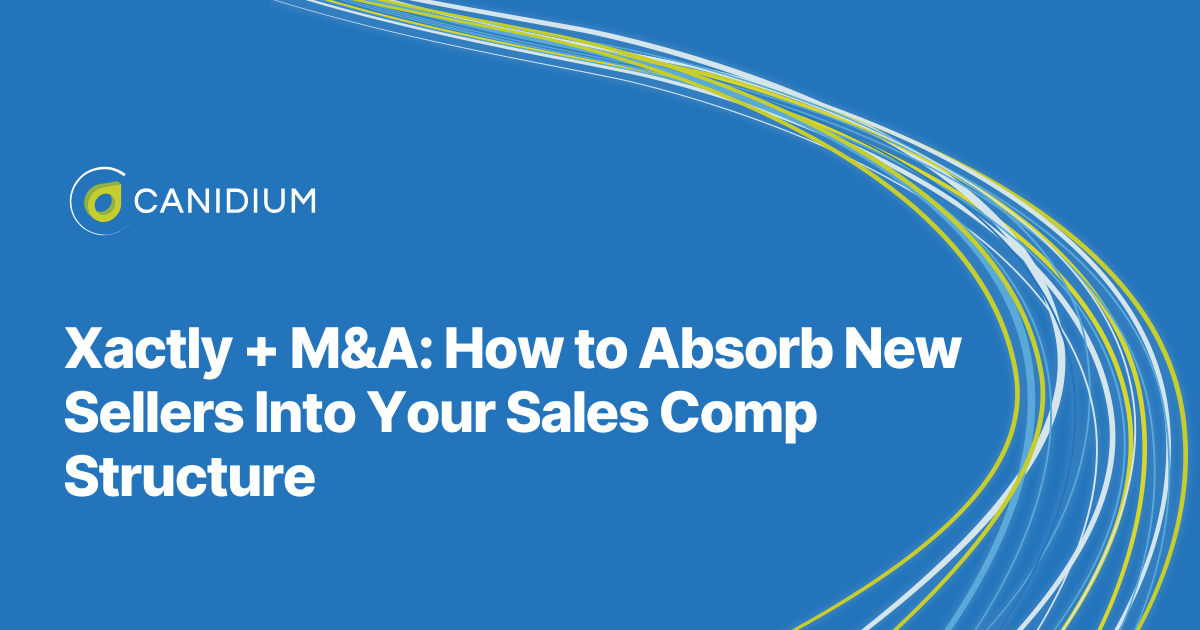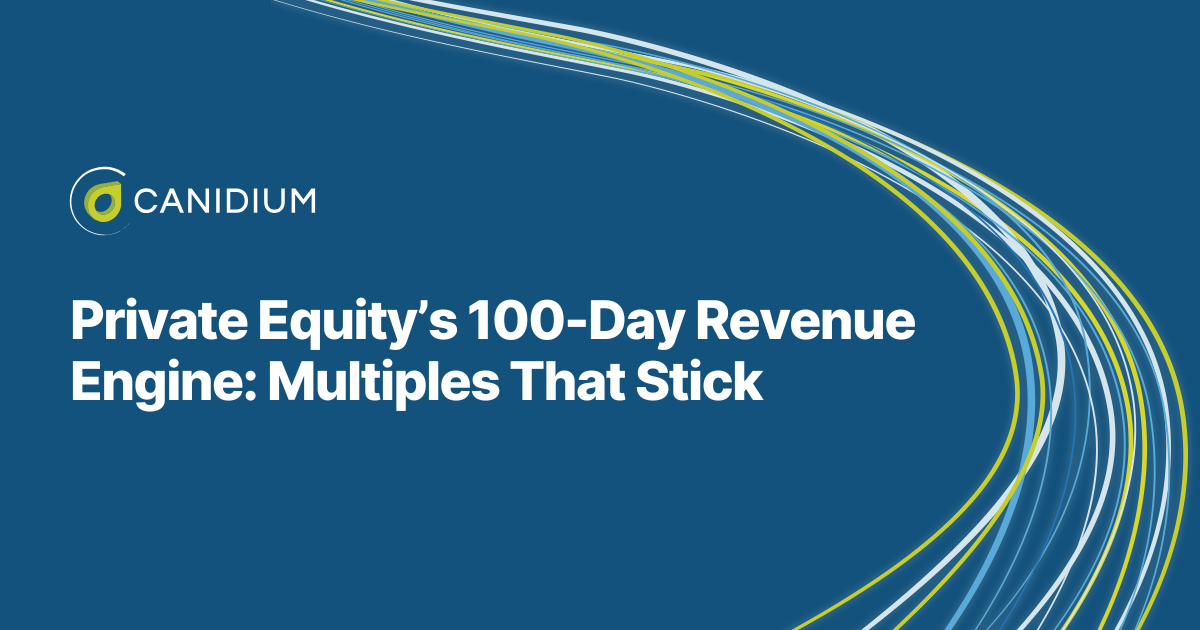Mergers and acquisitions can unlock powerful growth, but they can also derail your sales engine if compensation gets messy. When two revenue organizations come together, it’s not just systems that need to be integrated. You’re blending cultures, pay philosophies, data, and expectations. One missed payment cycle or confusing plan change can send top sellers running.
Only 10% of survey respondents reported “significant success” in post-M&A employee retention. However, 65% said access to talent was either “very important” or the “most important” goal of an acquisition. This reality suggests current mergers and acquisitions processes simply aren't cutting it.
In this post, we’ll walk through how to harmonize sales compensation in the first 90 days post-acquisition using Xactly. With the right structure, you can stabilize payouts, simulate new plans safely, and standardize governance before it snowballs into disputes or attrition. Here's how:
Why compensation integration is mission-critical
After an acquisition, sellers want one thing: certainty. Yet most private equity integration teams focus first on systems and reporting, not pay. This oversight is extremely detrimental, driving talent flight, revenue stalls, and reconciliation nightmares.
On top of retention loss, expensive compensation errors caused by M&A practices are all too common. Roughly 56% of organizations experience regular commission inaccuracies, and those errors scale exponentially when you merge systems or inherit spreadsheets from multiple sources. And for finance, it’s not just about payouts, ASC 606 and IFRS 15 require careful accounting of commissions as capitalized costs, so data integrity matters from day one.
Think in phases: Stabilize → Simulate → Standardize
The most successful private equity firms follow a rhythm with built-in due diligence. You don’t have to fix everything on Day 1, but you do need to build trust fast.
Phase 1: Stabilize payouts and data flow.
In the first two weeks, your job is to protect confidence. Keep legacy plans running until you can validate their data and calendars inside Xactly. Establish predictable data feeds from both companies using Xactly Connect, normalize IDs and pay periods, and start loading transactions into Xactly Incent. Even if you’re still cutting checks through the old payroll system, having consistent statements visible builds trust. Meanwhile, set up Xactly CEA to ensure commissions are captured correctly for ASC 606 reporting.
Phase 2: Simulate new plan designs.
By weeks three through six, you should begin shadow-running new plan scenarios. Clone a subset of roles in Design and replay 6–12 months of history to see how proposed plans would affect earnings, affordability, and fairness. Use Xactly Plan to test territory structures and ensure quotas match opportunity potential. Modeling this way allows you to see outcomes before anyone’s pay actually changes, a crucial safeguard for morale and budget alignment.
Phase 3: Standardize plans and governance.
Weeks seven through thirteen are about controlled transition. Publish finalized territories and quotas first, then roll out the new comp plans that align to that structure. Sunset temporary guarantees, define clear dispute timelines, and codify all approvals and documentation inside Xactly. Running one parallel pay cycle helps catch small discrepancies before go-live. Once you see payout deltas stabilize, flip the switch and move entirely onto the unified structure.
Common pitfalls and how to avoid them
Most M&A integrations stumble not on strategy but on due diligence of execution details. Data contracts may not match, territories often overlap, and accounting policies can conflict. Xactly helps mitigate those risks by offering consistent data integration through Connect, standardized coverage modeling through Plan, and automated capitalization and amortization through CEA. Together, these systems form the backbone of a reliable compensation environment.
Cultural and communication issues matter just as much. When sellers feel left in the dark, even accurate systems can’t save retention. So, read your messaging with clarity: payouts will continue as scheduled, visibility will improve through Xactly dashboards, and plan updates will be reviewed with each manager one-on-one. Transparency is your retention strategy.
Governance, controls, and audit readiness
A smooth integration also depends on having an auditable process. Start by storing all plan documents and approval workflows directly in Xactly Incent or Extend instead of relying on email threads. Keep your capitalization methods consistent within CEA, ensure transaction mappings are version-controlled, and maintain a clear log of every policy change. Those artifacts not only prevent errors, they make life easier for your auditors and finance teams when reconciliation season arrives.
By the 90-day mark, you should have achieved three measurable milestones: legacy plans still paying on time, a validated design for the new unified plan, and your first parallel pay cycle completed with minimal disputes. From there, you can turn your attention to optimizing SPIFF calendars, refining analytics, and using Xactly’s AI-powered forecasting tools to guide future design changes.
The business case for doing it right
Forrester’s Total Economic Impact™ study found that organizations deploying Xactly Incent achieved a 328% ROI over three years, largely by reducing administrative effort, eliminating errors, and improving visibility. During M&A, those efficiencies compound. Every week saved in modeling and reconciliation means fewer missed payouts and fewer distractions from selling.
And the cultural upside is even greater. By showing new team members that their data is accurate, their pay is transparent, and their success is measurable, you turn a chaotic transition into a confidence-building moment.
Forrester's study found the composite organization experienced:
- Efficiency: 60% decrease in time needed to configure payment plans and calculate commission payments; streamlined process due to integration with Salesforce
- Accuracy: 99% payment accuracy; 90% average reduction in overpayments
- Productivity: Reduced payment inquiries and disputes by 83% with 24/7 visibility into performance & expected commissions.
Overseeing smooth mergers & acquisitions
M&A integrations are rarely smooth, but compensation doesn’t have to be the problem child. With a phased approach and a strong platform like Xactly, you can protect seller trust, maintain compliance, and build a unified performance culture faster than most organizations think possible.
Start with stability, invest in simulation, and end with standardization. That’s the formula for turning two sales teams into one high-performing force, without losing a beat. Our team of Xactly implementation experts offer free consultations to help private equity firms develop bespoke integration plans, no strings attached.







